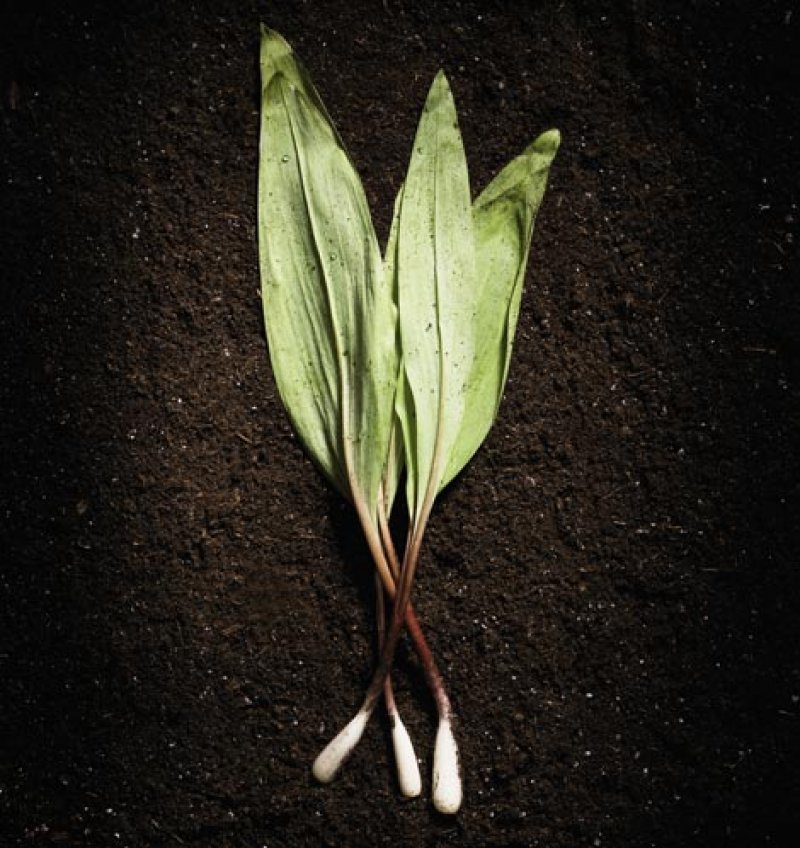Ramps
Ramps:
Moving to the mountains from the Midwest, I knew there would be unexpected words, idioms, customs, curves, and elevation.
However, I was surprised by the folks, pickup trucks parked in the gravel along the main road, with hand-painted signs that read RAMPS.
“As if biking here isn’t dangerous enough,” I thought, “they think they’re going to make money selling ramps?” I envisioned the ramp made of scrap plywood nailed to a two-by-four that my brother built during our childhood to add excitement to our afternoons spent biking the flat grid of roads that blanket Northern Indiana.
I guess I was too busy keeping my eye on the curvy road to notice the pile of dirt-caked wild leeks displayed on the hoods of the pickups. In fact, it took me years to discover that a ramp is a tasty, though pungent, seasonal vegetable that’s difficult to cultivate and must be purchased along roadsides whenever you happen to spot some. This spring, I kept my eyes trained on the wide gravel stretch along the highway where I have frequently purchased the wild leeks, texting all my friends when I scored what I’m sure were the first ramps of the season. By the time I reached home, my van reeked with verdant, eye-watering, garlicy fumes.
Speculation about the effects of ramps is wide-ranging. No doubt, though, that they give you some mighty fierce breath. Folks from around here will tell you that school children who had eaten excessive amounts of them were relegated to a special ramp zone in the back of the classroom. One of my husband’s staff also claims they will “lay you out.” Though another local friend says it’s the sheer volume of the traditional ramp meal that makes one “kindly” sleepy: scrambled eggs with chopped ramps, skillet potatoes, corn bread, and creasy greens—all cooked with fat back or bacon.
After barraging friends with questions about how to cook them, my husband and I settled for a very conservative start the first time we contended with this new ingredient. We simply sautéed the bulbs, which we served beside scrambled eggs. We weren’t sure, based on the rumors, they’d go over well with the kids. That time, we foolishly made the mistake of discarding the broad flat leaves. Now I know better. I only cut off the spidery roots and use every last bit.
This year, we fixed the traditional mountain ramp dinner to welcome the season, and found we used every last drop of the bacon fat. (I am pleased to report that none of us have had a coronary event yet.) We also branched out into new territory. When one of my husband’s patients dug him about 10 pounds of ramps, we knew we had the volume to both experiment and preserve some. A quick search on the Internet indicated that we should cut the bulbs off and freeze them as-is and blend the leaves with a little olive oil into a pesto, which can also be frozen. So now I have garlicy-onion flavors just waiting for my winter stews, curries, and casseroles.
Our experiments have been pretty successful, too. Once I diced the leaves in with grilled mango, cilantro, soy sauce, and strawberry vinegar to make a chutney for fish. Even my elementary-age children approved. (And I ate the leftovers with a spoon while cleaning up the kitchen after the meal.) Another time, my husband mixed some of the pesto with cream cheese and used that as a filling for stuffed burgers. One guest, who’d managed to grow up here and never eat ramps, said they were the best burgers she’d ever had. For the rest of the week, I spread the leftover filling on lunch meat sandwiches, egg and cheese bagels, and even on lettuce leaves, which I rolled up to make snacks. Our most recent success story was the venison cube steak, which cooked all day in a crock pot of brown gravy swimming with ramp bulbs. We served this over egg noodles, and even my most reluctant eater cleaned his plate.
Those roots I cut off don’t go to waste either. One local friend told me she plants them and has managed to start a patch in her backyard. So, after a ramp meal, I grab my spade and the bowl of dirty roots and hike up into our cove. I dig a hole on a slope where they can get the afternoon sun they seem to like. (I’ve questioned the roadside sellers as to the terrain the ramps favor.) Each time I dig in a new spot, hoping a patch will take. It’s like putting my own roots down in these mountains and hoping I flourish (despite my stink).
Britt Kaufmann lives in Yancey County, where she helps plan the Carolina Mountains Literary Festival. Her chapbook of poems, Belonging, was published by Finishing Line Press this year and her first play, An Uncivil Union, was produced in June at the Parkway Playhouse.
